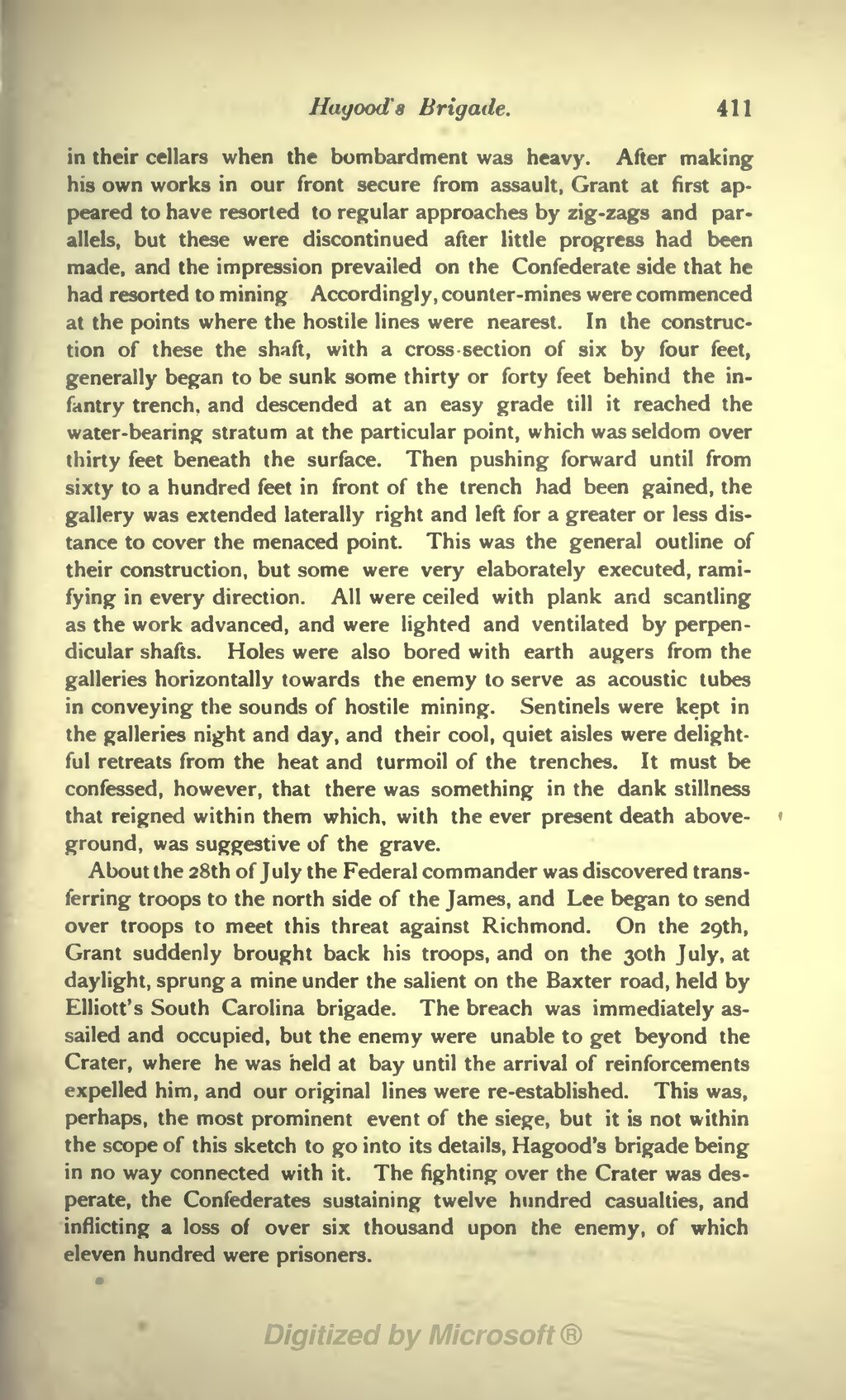Hayood's Brigade. 411
in their cellars when the bombardment was heavy. After making his own works in our front secure from assault, Grant at first ap- peared to have resorted to regular approaches by zig-zags and par- allels, but these were discontinued after little progress had been made, and the impression prevailed on the Confederate side that he had resorted to mining Accordingly, counter-mines were commenced at the points where the hostile lines were nearest. In the construc- tion of these the shaft, with a cross section of six by four feet, generally began to be sunk some thirty or forty feet behind the in- fantry trench, and descended at an easy grade till it reached the water-bearing stratum at the particular point, which was seldom over thirty feet beneath the surface. Then pushing forward until from sixty to a hundred feet in front of the trench had been gained, the gallery was extended laterally right and left for a greater or less dis- tance to cover the menaced point. This was the general outline of their construction, but some were very elaborately executed, rami- fying in every direction. All were ceiled with plank and scantling as the work advanced, and were lighted and ventilated by perpen- dicular shafts. Holes were also bored with earth augers from the galleries horizontally towards the enemy to serve as acoustic tubes in conveying the sounds of hostile mining. Sentinels were kept in the galleries night and day, and their cool, quiet aisles were delight- ful retreats from the heat and turmoil of the trenches. It must be confessed, however, that there was something in the dank stillness that reigned within them which, with the ever present death above- ground, was suggestive of the grave.
About the 28th of July the Federal commander was discovered trans- ferring troops to the north side of the James, and Lee began to send over troops to meet this threat against Richmond. On the 2gth, Grant suddenly brought back his troops, and on the 3Oth July, at daylight, sprung a mine under the salient on the Baxter road, held by Elliott's South Carolina brigade. The breach was immediately as- sailed and occupied, but the enemy were unable to get beyond the Crater, where he was held at bay until the arrival of reinforcements expelled him, and our original lines were re-established. This was, perhaps, the most prominent event of the siege, but it is not within the scope of this sketch to go into its details, Hagood's brigade being in no way connected with it. The fighting over the Crater was des- perate, the Confederates sustaining twelve hundred casualties, and inflicting a loss of over six thousand upon the enemy, of which eleven hundred were prisoners.
